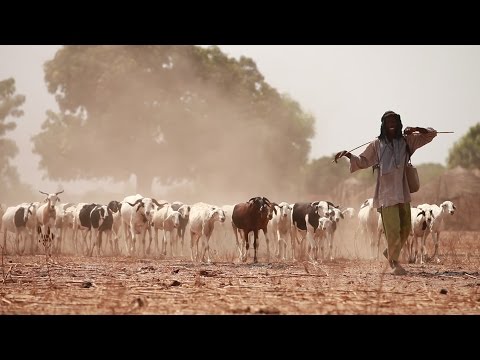The following post was originally published on the Agrilinks site.
I grew up in a village just west of Serengeti National Park in northern Tanzania. I enjoyed hunting for gazelles and antelopes, and trees and bushes provided ideal hiding places for wild animals. However, marauding hyenas and even lions were a constant threat at night for both humans and their livestock. As population grew and agriculture expanded, trees and bushes were cleared for agriculture and to deny hiding places for dangerous animals. Wild animals are gone and hunting is no longer possible. Women also spend long hours looking for firewood. Like the case in other sub-Saharan African countries, severe land degradation also occurred, reducing land productivity.
What I observed in my area is not unique – but rather it is a problem experienced by the global community. In our recent study, my colleagues and I found that about 30 percent of the global land area—where 3.2 billion people live—has experienced severe land degradation, which is estimated to have an annual cost of about US$300 billion in 2007 dollars. Unlike in past studies, we found that land degradation occurred in all agroecologies around the world, in both developed and developing countries.
Land degradation can be reversed
Land degradation is long-term loss of land ecosystem services—goods and services derived from the interconnected system of biological communities and their physical environment. Experience has shown that land degradation can be reversed if the right policies and institutions exist that provide incentives for investing in restoration of degraded lands.
It pays to restore
Further, our study shows that returns to investment in restoration of degraded lands are quite high. Land users get $5 USD for every dollar they invest in restoration of degraded lands. The returns come in the form of higher yields for farmers and higher land productivity in general. If restoration of degraded lands were stocks in the New York Stock Exchange, they would all be purchased in a one-day sale. Yet both private land users and governments, especially in low income countries, do not invest significantly in restoration of degraded lands. For example, in sub-Saharan Africa—where the livelihoods of a majority of the people depend on land—government allocation to land-based sectors is only 5 percent.
Restoring degraded land helps more than just land users. In fact, our study shows that more than half of the benefits of restoration is accruable to people outside the farm. For example, restoring degraded lands mitigates global warming through carbon sequestration and reduces polluting sediments in water bodies.
But policymakers lack information on the cost of land degradation and the benefits of reversing it. Our study contributes to closing this gap by providing analysis at the global and regional level. We also conducted 12 country case studies—representing 43 percent of the global population and 23 percent of the world’s land area—to provide detailed analysis of the cost of land degradation and actions required to address this problem.
Factors for investment
In general, our study shows that good governance, access to markets, and incentives are the three most important drivers of restoration of degraded lands. In developing countries, improvement of governance was strongly associated with land improvement, even in very poor countries. For example, governance in Niger, one of the poorest countries in the world, has improved in the past 15 years and this was associated with significant land improvement.
In countries with a high human development index, good governance and access to markets are not crucial for restoring degraded lands, but environmental-friendly policies are. Costa Rica represents one success story. With a high ranking in the United Nations human development index, the country has successfully implemented payment for ecosystem services. Due to this and other programs, the country’s deforestation was eliminated completely, and by 2000, the forest area started increasing by one percent each year.
The degraded land I saw in my home village can be saved. Putting information in the hands of policymakers about the high costs of degraded land—and the impressive returns to even small investments in land restoration—is the first step.







